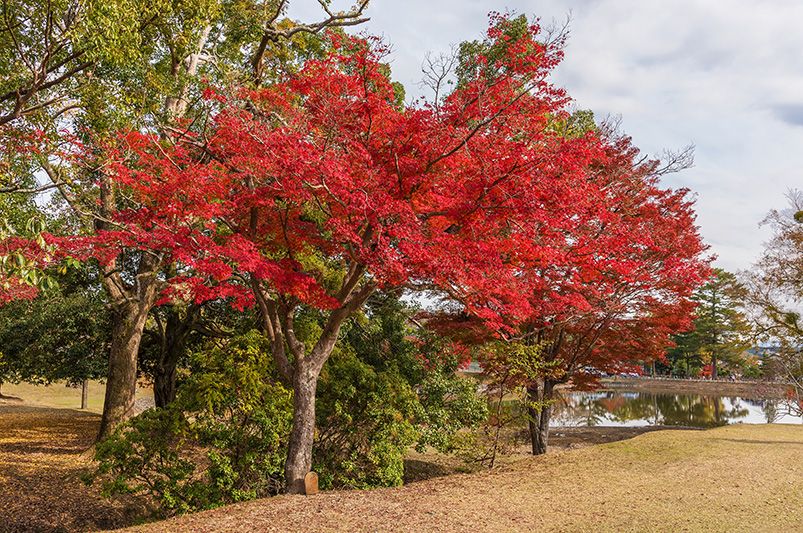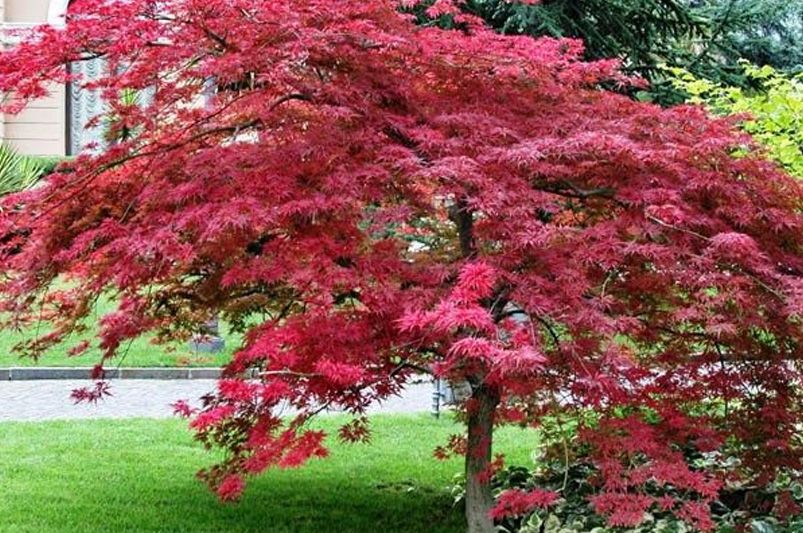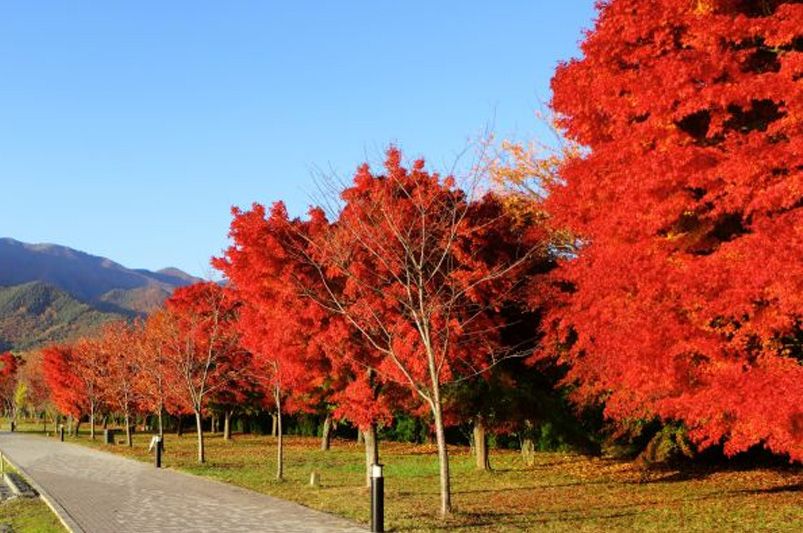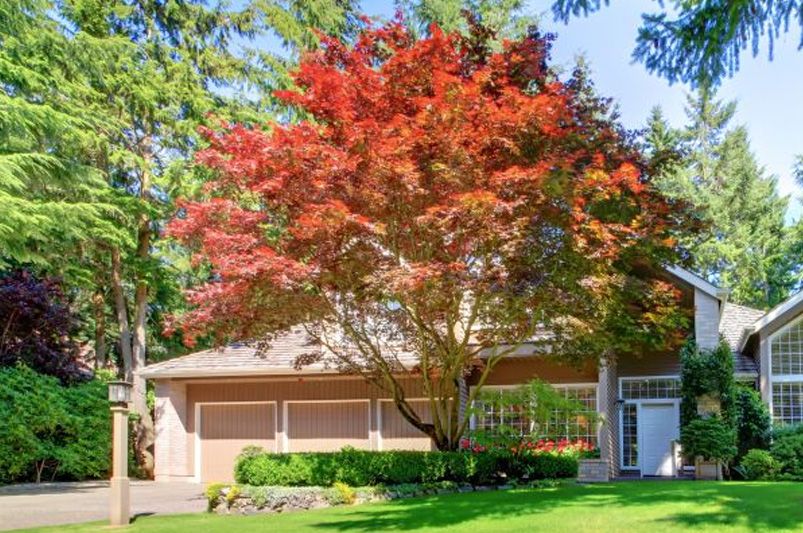
Why Red Maple Trees are a Garden Favorite
Published: 31/12/1969 | Updated: 08/08/2024
Nature's Brilliance: Red Maple Trees
Red Maple trees, known for their stunning autumn foliage and versatile adaptability, are a favorite among gardeners and landscapers for several reasons. Their vibrant foliage provides stunning seasonal color. In the fall, red maples display a breathtaking array of red, orange, and yellow hues, making them stand out in any landscape. Some varieties, like the Summer Red Maple, even offer colorful foliage throughout the growing season.


Beyond their aesthetic appeal, Red Maples are highly adaptable and resilient. They can thrive in various soil conditions, from moist and well-drained soils to more challenging environments. This versatility makes them suitable for multiple climates and garden settings. They also grow relatively quickly, providing shade and mature beauty to landscapes in a shorter period than other tree species.
Red maples are an ideal choice for both novice gardeners and experienced landscapers looking for a low-maintenance yet striking tree. Once established, they need minimal pruning and are resistant to pests and diseases.
How Red Maples Support Wildlife and Ecosystems
Habitat and Food for Wildlife
Red Maples provide essential habitat and food sources for various wildlife species. Their dense canopy offers bird shelter and nesting sites, while their seeds, known as samaras, are a food source for squirrels, birds, and other small mammals. During their blooming season, the trees also attract pollinators like bees and butterflies, contributing to the overall health of the ecosystem by supporting pollination.
Air Quality Improvement
Red Maples contribute significantly to improving air quality. They absorb carbon dioxide and release oxygen through photosynthesis, helping mitigate greenhouse gas effects. Red Maples trap airborne pollutants such as dust, smoke, and particulate matter on their leaves, cleaning the air around them. This makes them valuable in urban and suburban settings where air pollution can be a concern.
Stormwater Management
The extensive root systems of Red Maple trees are highly effective in managing stormwater runoff. These roots help stabilize soil, reducing erosion and preventing sediment from entering waterways. They also enhance soil infiltration, allowing more rainwater to be absorbed into the ground rather than running off into storm drains. This process reduces the risk of flooding and helps recharge groundwater supplies. Red maples reduce the burden on municipal stormwater systems by capturing and using rainwater, contributing to more sustainable water management practices.

Japanese Red Maple Tree
The Japanese Red Maple, a standout among red maple varieties, is beloved for its delicate, lacy leaves that transform into vibrant shades of red, orange, and yellow in the fall. Typically reaching 15-25 feet tall, this ornamental tree is perfect for adding elegance and a splash of color to any garden.
Regarding sunlight requirements, this variety prefers partial shade but can tolerate full sun with adequate moisture. It thrives in well-drained, slightly acidic soils and requires low maintenance, with minimal pruning needed to maintain its shape. Choose a spot that receives morning sun and afternoon shade for the best planting location. Keep the soil consistently moist, especially during dry spells, and apply mulch to help retain soil moisture and protect the roots.

October Glory Red Maple Tree
Gardeners favor this variety for its bright red foliage that lasts longer into the season than other maples, offering extended visual appeal in any garden. Growing to a mature height of 40-50 feet with a rounded canopy, it is an excellent choice for providing shade and adding vibrant color to larger landscapes.
This maple thrives in full sun to partial shade and is adaptable to various soil types, although it prefers moist, well-drained soils. Because it grows quickly, the maple tree is ideal for new landscapes where quick establishment is desired. The October Glory is also low maintenance, requiring minimal pruning to maintain its attractive shape.
Choose a site with plenty of sunlight for optimal planting and prepare the soil to ensure good drainage. Regular watering is important to support healthy growth, particularly during the establishment period and dry spells. Mulching around the tree's base can help retain moisture and suppress weeds.

Summer Red Maple Tree
The Summer Red Maple is a unique variety known for its vibrant red foliage throughout the growing season, not just in the fall. This striking feature makes it an excellent choice for adding consistent color to your garden from spring through autumn. The Summer Red Maple typically grows to 40-60 feet with a spreading canopy, providing ample shade and a beautiful focal point in more significant landscapes.
This maple variety thrives in full sun to partial shade and adapts well to various soil conditions, though it prefers moist, well-drained soils. It has a moderate to fast growth rate, making it an excellent option for those looking to enhance their landscape with a mature tree. The Summer Red Maple is also relatively low maintenance, with minimal pruning required to maintain its form and health.
For planting, select a location with sufficient sunlight and prepare the soil to ensure proper drainage. Consistent watering is crucial to promote healthy development, especially during the first few years of growth and during dry periods. Mulching around the tree's base helps keep soil moisture and reduce weed growth.
Plantation & Growth
Planting Red Maple trees involves selecting the right site with adequate sunlight and well-drained soil.
Planting Tips:
- Choose a site with full sun to partial shade.
- Ensure the soil is well-draining to prevent root rot.
- Space trees to allow for mature growth.
- Water regularly, especially during the first few years, to establish roots.
- Plant Care
- Proper care is essential to maintain the health and beauty of your red maple trees. Our team offers consultation calls tailored to your landscape’s needs, ensuring trees thrive in your garden.
Care Tips:
- Watering: Keep the soil moist, particularly in dry periods.
- Mulching: Apply mulch around the base to keep moisture and control weeds.
- Fertilizing: Use a balanced fertilizer in early spring to support growth.
- Monitoring: Regularly check for signs of stress or disease.
- Pruning & Propagation
- Pruning helps maintain the shape and health of your red maple trees, while propagation allows you to expand your garden with new plants. ShrubHub offers professional pruning and propagation services to keep your landscape in top condition.
Pruning Tips:
- Prune in late winter or early spring before new growth starts.
- Remove dead or diseased branches to improve tree health.
- Thin out crowded branches to allow light and air to reach the inner canopy.
Propagation Methods:
- Seed: Collect seeds in autumn and plant them in a controlled environment.
- Cuttings: Take softwood cuttings in late spring or early summer for propagation.
Common Pests & Diseases
Red Maple trees are susceptible to pests and diseases, which, if left unchecked, can impact their health and appearance.
Aphids
Aphids are small, sap-sucking insects that can cause significant damage to Red Maple trees. These pests feed on the sap of the leaves, leading to leaf curling, yellowing, and stunted growth. Aphids can also produce a sticky substance called honeydew, which attracts other pests and can develop sooty mold, further harming the tree’s health.
Leaf Scorch
Leaf scorch is a common issue for red maples, characterized by the browning of leaf edges. Drought, poor soil conditions, or excessive heat often cause this condition. Leaf scorch occurs when the tree cannot transport sufficient water to its leaves, resulting in dehydration and tissue damage. While leaf scorch does not typically kill the tree, it can weaken it and make it more susceptible to other stresses and diseases.
Verticillium Wilt
Verticillium wilt is a severe soil-borne fungal disease that affects the vascular system of red maples. This fungus invades the tree’s roots and spreads through the water-conducting tissues, causing wilting, yellowing, and branch dieback. Infected trees often show symptoms of leaf discoloration and premature leaf drop. Verticillium wilt can be challenging to manage and may result in the eventual death of the tree if not adequately addressed.
How can you manage these pests?
Regular Inspections
Regularly inspecting your Red Maple trees for signs of pests or disease is crucial in maintaining their health. Early detection allows for prompt treatment and can prevent the spread of issues. Look for symptoms such as leaf curling, discoloration, wilting, and the presence of insects or mold.
Organic and Chemical Treatments
Depending on the severity of the infestation or disease, organic or chemical treatments may be necessary. Organic treatments, such as insecticidal soaps and neem oil, are effective against aphids and other pests without harming beneficial insects or the environment. Chemical treatments like fungicides and pesticides may be required for more severe cases.
Proper Watering and Soil Conditions
Maintaining proper watering and soil conditions is essential to prevent stress and support the overall health of your red maple trees. Ensure the soil is well-drained and moist, particularly during dry spells. Mulching around the tree's base helps retain soil moisture and regulate temperature. Avoid overwatering, as this can lead to root rot and other issues. Providing the right balance of water and nutrients will strengthen your trees and make them more resilient to pests and diseases.
Enrich Your Environment With ShrubHub
Red maple trees are a delightful addition to any garden, offering stunning beauty and practical benefits. At ShrubHub, we are dedicated to helping you create your dream yard with our full-service landscaping solutions. From selecting the right red maple variety for your garden’s style and needs to planting, care, and maintenance, our team is here to support you every step. Transform your space with ShrubHub and enjoy the beauty and ecological advantages of red maple trees in your garden.


